Posts Tagged ‘large animal vet’
The 4 Best Gifts for Your Dog, Dog Owners, and Dog Lovers
 As the holidays approach rapidly, that means it is time for gift giving! It can be easy to forget your pup in the chaos of the holidays, but here are 4 ideas so your pup doesn’t get forgotten.
As the holidays approach rapidly, that means it is time for gift giving! It can be easy to forget your pup in the chaos of the holidays, but here are 4 ideas so your pup doesn’t get forgotten.
A Matching Bandanna and Mask Set
This ensures that you and your pup hit the town in style and safely! There are many options available online at places such as Etsy that allow you to support small businesses and get a handmade gift for your favorite dog or dog owner. Here are some of my favorites:
Holiday Matching Mask and Dog Bandanna Set, Red and Black Flannel Mask, Bandanna, and Scrunchie Set, and Happy Snowman Bandanna and Face Mask Set
A Treat Toy
Intended to mimic the experience of hunting prey, these types of toys wobble around while your dog paws at it. It rocks back and forth, and your pup will be obsessed with the magic dispenser that they can’t predict or conquer. Here is an example: The Game Dog Toy. Other options for similar products are Snuffle Mats. They allow dogs to find dry food or treats that you’ve hidden. It is a stimulating activity that dogs love. It also serves as a way to extend food and playtime for your pup every day. This Snuffle Mat has great reviews, is easy to fill, and machine washable.PAW5 Wooly Snuffle Mat
Barkbox Subscription
This company ships out a box either once a month or every three, six, or twelve months that give your dog themed and customized treats and toys! My dog at home LOVES the treats and toys that come to our door and it makes Barkbox day her favorite day of the month! Completely customizable with great customer service, Barkbox is a gift that every dog will appreciate. Get one here: Barkbox Subscription
A New Leash and Collar Set
Every dog and dog owner appreciates a new leash and collar that gets worn and used daily. They also allow the owner and dog to express themselves to every other pet and human! You can get fun colored ones like this or even customized ones like this! Also important are holders for their leashes! Here is a cool handmade one!
How Do I Know It’s Time To Euthanize My Pet?
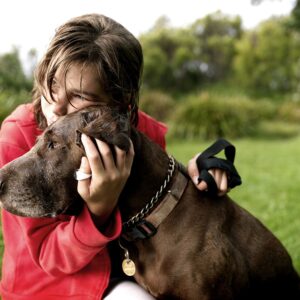 Some pets die of old age in the comfort of their own home, but many others become seriously ill or get injured in a way or experience that significantly diminishes their quality of life as they grow very old. In these situations, owners are often forced to consider the hard choice of whether to have your pet euthanized in order to spare your pet from pain and suffering.
Some pets die of old age in the comfort of their own home, but many others become seriously ill or get injured in a way or experience that significantly diminishes their quality of life as they grow very old. In these situations, owners are often forced to consider the hard choice of whether to have your pet euthanized in order to spare your pet from pain and suffering.
To know when it is time, it is important to talk with your veterinarian. They are the best-qualified person to help guide you through this difficult process. In some cases, your veterinarian may be able to tell you definitively that it is time to euthanize your pet, but in other cases, you may ultimately need to make the decision based on your observances of your pet’s behavior and attitude.
Some signs that your pet is suffering and no longer enjoying a good quality of life include chronic pain being experienced that cannot be controlled with medication, frequent vomiting or diarrhea that is causing dehydration and/or weight loss, they stop eating, incontinence, lost interest in favorite activities, cannot stand on their own, and/or chronic labored breathing. It is a very difficult decision, but one must consider your pet’s quality of life.
Once you have made the very difficult decision, you also need to decide how and where you and your family will say the final goodbye. Before the procedure is scheduled to take place, make sure that all members of your family have had time with the pet to say a private goodbye. If you have children, make sure that you explain the decision to them and prepare them for the loss of the pet in advance. This may be your child’s first experience with death, and it is very important for you to help her or him through the grieving process. Books that address the subject, such as When a Pet Dies by Fred Rogers or Remembering My Pet by Machama Liss-Levinson and Molly Phinney Baskette, may be very beneficial in helping your child to deal with this loss. It is an individual decision whether or not you and your family want to be present during the euthanasia procedure. For some pet owners, the emotion may be too overwhelming, but for many, it is a comfort to be with their pet during the final moments. It may be inappropriate for young children to witness the procedure since they are not yet able to understand death and may also not understand that they need to remain still and quiet.
Deciding when it is time to say goodbye to your pet is never easy. Owners are put into the difficult decision of deciding when it is their time. While it is never easy, the staff at Olsen Veterinary Clinic are always here to answer whatever questions you may have. Feel free to reach out at 618-656-5868 with any questions or concerns you may have!
What You Need To Know About Canine Flu Season

Canine influenza is a highly contagious viral infection that affects dogs and cats. Influenza viruses are able to quickly change and give rise to new strains that can infect different species. Of the two strains identified in the US, both of them can be traced to influenza strains known to infect species other than dogs. At some point, these viruses acquired the ability to infect dogs and be transmitted from dog to dog. Virtually all dogs exposed to canine influenza become infected, with approximately 80% developing clinical signs of disease. The other 20% of infected dogs that do not exhibit clinical signs of the disease can still shed the virus and spread the infection.
Canine influenza is transmitted through droplets or aerosols containing respiratory secretions from coughing, barking, and sneezing. Dogs in close contact with infected dogs in places like kennels, groomers, day care facilities, and shelters are at an increased risk of infection. Canine influenza can be spread indirectly through objects like kennels, food and water bowls, collars, and leashes or people who have been in contact with an infected dog to avoid exposing other dogs to the virus. Due to this, people in contact with an infected dog should wash their hands and clean their clothing to avoid spreading the virus. The virus can stay alive and able to infect on surfaces for up to 48 hours, on clothing for 24 hours, and on hands for 12 hours. It is important to implement cleaning and disinfection procedures to reduce the risk of disease transmission.
The majority of infected dogs exhibit the mild form of canine influenza. The most common clinical sign is a cough that persists for 10-21 days despite treatment with antibiotics and cough suppressants. Affected dogs may have a soft, moist cough, or a dry cough similar to that induced by kennel cough. Nasal and/or ocular discharge, sneezing, lethargy, and anorexia may also be observed. Many dogs developed a purulent nasal discharge and fever. Some dogs are more severely affected and exhibit clinical signs of pneumonia, such as a high-grade fever and increased respiratory rate and effort.
Canine influenza cannot be diagnosed solely by clinical symptoms like coughing, sneezing, and nasal discharge because these signs also present with other canine respiratory illnesses. Tests must be done to properly identify strains of canine influenza virus. Contact Dr. Olsen to set up a test if you think that your dog may be infected.
Treatment for canine influenza is largely supportive. Good nutrition helps dogs mount an effective immune response. Most dogs recover from canine influenza within two to three weeks. Secondary bacterial infections, pneumonia, dehydration, or other health factors may require additional diagnostics and treatments.
While canine influenza is a serious threat, vaccines are available against both strands of canine influenza found in the US. Vaccination can reduce the risk of a dog contracting canine influenza and while it may not all together prevent an infection; it may reduce the severity and duration of illness. As always, feel free to contact Dr. Olsen at 618-656-5868 with any questions or to set up an appointment!
Dr. Olsen’s Breed Spotlight: The Himalayan Cat
 Have you ever seen a cat that looks like a mixture between a Persian cat and a Siamese cat? Well it might have just been a Himalayan cat! The Himalayan cat is a hybrid breed identical to the Persian, but Himalayans are distinguished by the points on the cats’ extremities including the facial mask, feet, ears and tail. This results in a Persian-type cat with the coloring and deep blue eyes of the Siamese-patterned cat. These cats are semi-playful but love to lay around and do nothing. They are typically extremely friendly to other pets and children but require a lot of grooming attention. The breed itself is not very vocal but they have an intense need for attention. All of this is not for nothing as Himalayans are extremely affectionate to their owners.
Have you ever seen a cat that looks like a mixture between a Persian cat and a Siamese cat? Well it might have just been a Himalayan cat! The Himalayan cat is a hybrid breed identical to the Persian, but Himalayans are distinguished by the points on the cats’ extremities including the facial mask, feet, ears and tail. This results in a Persian-type cat with the coloring and deep blue eyes of the Siamese-patterned cat. These cats are semi-playful but love to lay around and do nothing. They are typically extremely friendly to other pets and children but require a lot of grooming attention. The breed itself is not very vocal but they have an intense need for attention. All of this is not for nothing as Himalayans are extremely affectionate to their owners.
Having a firm, well-rounded midsection, they are medium to large in size. Their head is round, broad, and smooth domed. Their jaws are broad and powerful which accompanies a short, snub nose. Their ears are small and round set widely apart on the head. Himalayan’s coats are long all of the body with a dense undercoat. Perhaps the most striking attribute of the Himalayans are their large, round, and deep blue eyes. It gives their face a sweet expression.
Himalayans are wonderful indoor cat companions. They are gentle, calm, and sweet-tempered. Like Siamese cats, Himalayans love to play fetch with a piece of crumbled paper or a cat toy. They will be entertained for hours, or at least until their next nap. Himalayans are devoted and dependent upon their humans for companionship and protection. They crave attention and affection. Like their Persian siblings, they are docile and won’t harass you for attention the way that some breeds will. They possess the same activity level as the Persian but lack the vocality of a Siamese.
The Himalayan cat is an extremely beautiful cat that makes for a good family pet. While they are striking, it is important to make sure before adopting that you are able to give them the care that they need due to their intense grooming requirements. If you think you are able to give them the attention that they need (and want), then you just may be the right person to adopt a Himalayan cat that needs a home. If you have any questions, please feel free to contact Dr. Olsen at 618-656-5868.
Tips For Traveling With Your Pet This Summer
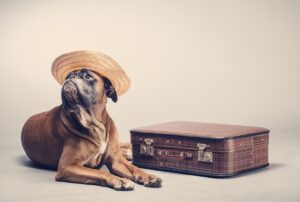 Traveling is an exciting yet stressful time for humans. Bringing your pet along usually adds to the stress level because it brings along extra preparation and attention to detail. Driving and flying each have their own challenges, but with the right advice, traveling with your pet can be a breeze. No matter where you are going or how you get there, it is important to have your pet wearing a collar and tag with your name, phone number, and any other contact information including emergency numbers.
Traveling is an exciting yet stressful time for humans. Bringing your pet along usually adds to the stress level because it brings along extra preparation and attention to detail. Driving and flying each have their own challenges, but with the right advice, traveling with your pet can be a breeze. No matter where you are going or how you get there, it is important to have your pet wearing a collar and tag with your name, phone number, and any other contact information including emergency numbers.
Unless your pet is small enough to ride with you in the cabin of a plane, air travel is extremely stressful but sometimes unavoidable. When flying by plane, it is best to book a direct flight whenever possible. This will decrease the chances that your pet is left on the tarmac during extreme weather conditions or mishandled by baggage personnel during a layover. Also, make sure that your pet’s vaccinations are up-to-date and that their overall health is good dated within ten days of your departure. At your appointment, you can also discuss sedation methods if you suspect that they may become anxious. One of the most important aspects of airline travel with your pet is the crate. The crate should be large enough for your pet to stand, sit, and turn around in comfortably. It should be USDA-approved and lined with shredded newspaper or towels to absorb accidents. Prior to your trip, tape a pouch of food to the outside of the crate so airline personnel will be able to feed your pet in case they get hungry while traveling. The night before you leave, freeze a small dish of water that will be melted by the time they may be thirsty. Make sure that the crate door is securely closed, but not locked, so that airline personal can open it in case of an emergency. Make sure that the crate is marked “Live Animal” as well as your name, cell phone number, emergency phone number, and a photo of your pet. In case your pet escapes, the photo can be a lifesaving measure.
When driving, traveling with pets involve a lot more than just loading the animal in the back seat. It is important to get your pets used to a long trip by taking them on short trips and slowly lengthening the time spent in the car. Keep your pets in a well-ventilated crate or carrier. The crate should be large enough for your pet to stand, sit, lie down and turn around in. Be sure to secure your pet’s crate so that it does not slide in the event of a sudden stop. If you don’t use a crate, be sure to keep your pet in a harness attached to a seat buckle. Be sure to bring a pet-friendly travel kit with food, bowls, leashes, poop bags, medication, and any travel documents. Be sure to bring a favorite toy or pillow to give your pet a sense of familiarity. Be sure to pack plenty of water and avoid feeding your pet in a moving vehicle. Your pet’s travel feeding schedule should start with a light meal three to four hours before departure. Perhaps most importantly, you should never leave your animal alone in a parked vehicle. In hot weather, the car turns into a furnace causing a risk of heatstroke. In cold weather, the car turns into a refrigerator holding in the cold which could lead to freezing to death.
However, you choose to travel with your pet, it is important to do it safely. By following these tips, both your stress and your pets’ stress can be reduced greatly making travel day a lot easier for both of you. If you have more questions about this or anything else regarding your pet, contact our office today!
Tips For Dealing With Your Long-Haired Dog This Summer
 When it comes to dogs, it’s no surprise that long-haired dogs are extremely gorgeous. Unfortunately with all of the beauty and fluff that they possess, long-haired dogs come with a bit more work when it comes to grooming them. In order to groom long-haired dogs, regular bathing is a necessity. On average, you should be bathing and grooming your dog once a month with two months being the absolute longest you go in between washes. Some dogs can be groomed every other week so long as you are using a dog shampoo that is gentle. Be wary of over bathing your dog as washing too frequently can result in dry skin.
When it comes to dogs, it’s no surprise that long-haired dogs are extremely gorgeous. Unfortunately with all of the beauty and fluff that they possess, long-haired dogs come with a bit more work when it comes to grooming them. In order to groom long-haired dogs, regular bathing is a necessity. On average, you should be bathing and grooming your dog once a month with two months being the absolute longest you go in between washes. Some dogs can be groomed every other week so long as you are using a dog shampoo that is gentle. Be wary of over bathing your dog as washing too frequently can result in dry skin.
When bathing a long-haired dog, matts are a very real issue and requires plenty of patience when bathing. Be sure to use lots of pet shampoo and work from the head down. Starting at the head and then working down from the back will allow you to lather the entire coat evenly and prevent you from having to go back to any missed areas. After you scrub the back and torso, move on to spot clean areas like the belly, chest, legs, and tails. Rinse from head to toe, and then let your dog shake off all of the excess water. Especially with long-haired breeds, it is important to let your dog shake dry as it makes the drying process a lot more manageable. Air drying is the best method for your dog’s skin even though it takes the longest and it might leave your dog with a bit of a “wet dog” smell. Blow drying might lead to skin irritation. Towel drying is the happy medium wherein you can dry your dog 90% of the way and let them air dry the last 10%. Even if you air dry, remember to wipe the ears and paws at these sensitive areas to avoid bacteria grown.
After bathing, brushing should be done immediately to remove any excess dog hair that has come off during the bath. While brushing should be a daily part of your dog’s grooming routine with a long-haired dog, it is especially important in the first few days after a bath. Bathing stimulates the skin and promotes new hair growth. As a result, your dog will shed the most right after a rinse. It is crucial to help the regenerative process of hair growth by eradicating all of the hair your dog is trying to rid itself of.
Some may choose to clip their dogs coat after cleaning. If you are trying to go for a certain cut, decide on the shape you are trying to achieve and then clip small amounts at a time to ensure you don’t take too much away. Clipping is one of the most challenging and potentially scary parts of grooming a long-haired dog. Because of this, there is no shame in reaching out for professional assistance. At Olsen Veterinary Clinic, we have an in-house groomer! Contact Karen with Prancing Paws Grooming at 618-910-7581 with any questions or to schedule a grooming appointment!
One of the most integral parts of grooming is cleaning your dog’s ears. Dog’s ears are one of the most sensitive areas but also one of the most susceptible areas to nasty things like yeast infections or mites. After bathing, take time to clean the inside of your dog’s ears with cotton or a similar material that has been lightly covered in witch hazel. Be vigorous in cleaning your dog’s ears without being rough or obtrusive. It is essential to clean all of the flaps and folds inside the ear but be careful to avoid entering the ear canal.
As always, if you have any questions or concerns, feel free to contact Olsen Veterinary Clinic at 618-656-5868.
Dr. Olsen’s Breed Spotlight: The Peruvian Inca Orchid
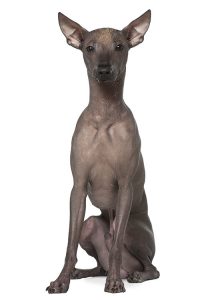 The Peruvian Inca Orchid is not a flower, but a hairless sighthound that developed in Peru. The breed can be hairless or coated and can be found in a range of sizes. These dogs are good hunters and do well in agility. In the hairless variety, the skin can be of any color. The coated variety features all colors as well including black, brown, pink, tan, and white. On a sunny day, Peruvian Inca Orchids require sunscreen because of their exposed skin.
The Peruvian Inca Orchid is not a flower, but a hairless sighthound that developed in Peru. The breed can be hairless or coated and can be found in a range of sizes. These dogs are good hunters and do well in agility. In the hairless variety, the skin can be of any color. The coated variety features all colors as well including black, brown, pink, tan, and white. On a sunny day, Peruvian Inca Orchids require sunscreen because of their exposed skin.
The ancient history of the Peruvian Inca Orchid can be told through pottery and textiles. The breed first appeared in Moche pottery in 750 AD. The Chancay people used the dogs as companions, and certain pottery even depicts them in sweaters. The Chimu considered them good luck and used the dogs’ warmth for the treatment of arthritis and respiratory conditions.
The original hairless dogs were small companion animals, but when Peru was conquered by the Conquistadors, the small dogs were interbred with the dogs of the foreigners and over the years, three distinct sizes developed. In the mountainous regions, the Andean people protected the dogs, but the breed did not fare well in the cities along the coast. There, the hairless dogs were considered diseased and were often exterminated.
In 1966, an American, Jack Walklin, visited Peru and brought eight dogs back to the US. He is believed to be the one to have named the breed the Peruvian Inca Orchid and the breed was established under that name in the US and Europe. In 2001, Peru declared the breed a National Patrimony and the dogs are now protected in Peru.
Peruvian Inca Orchids come in a range of sizes with the smallest standing just short of 10” and the largest topping out at 26”. The distinguishing feature of a Peruvian Inca Orchid is their hairlessness. Their skin can be a solid color or spotted with unpigmented areas. Peruvian Inca Orchids that are coated are in the minority and can occur in the same litter with hairless Peruvian Inca Orchids.
Peruvian Inca Orchids are slim dogs who are very noble and affectionate to those close to them. At the same time, Peruvian Inca Orchids are lively, alert, and can be wary of strangers. Peruvian Inca Orchids make good watch dogs. Peruvian Inca Orchids are loyal and protective of their family but like all dogs should be supervised around children. If you have small pets, the Peruvian Inca Orchid might not be the dog for you as Peruvian Inca Orchids might mistake your small pet as prey.
Dry Drowning: What Is It And How Do I Prevent It For My Dog
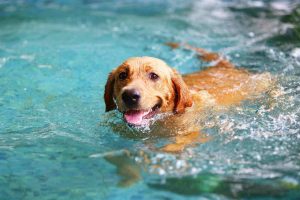 Everyone knows of drowning when a person or a pet is submerged in water and can’t get oxygen. Have you heard of dry drowning? Dry drowning occurs when water is aspirated into the lungs or other parts of the airway. If the water doesn’t make it to the lungs, the vocal cords can begin to spasm making breathing difficult. If water does make its way to the lungs, serious complications and even death may occur. The latter condition is referred to “secondary drowning”, but it’s usually also referred to as dry drowning. Dry drowning is a scary thing as it can ‘happen’ HOURS after exposure to water. It’s something that affects all animals with exposure to water, from humans to dogs.
Everyone knows of drowning when a person or a pet is submerged in water and can’t get oxygen. Have you heard of dry drowning? Dry drowning occurs when water is aspirated into the lungs or other parts of the airway. If the water doesn’t make it to the lungs, the vocal cords can begin to spasm making breathing difficult. If water does make its way to the lungs, serious complications and even death may occur. The latter condition is referred to “secondary drowning”, but it’s usually also referred to as dry drowning. Dry drowning is a scary thing as it can ‘happen’ HOURS after exposure to water. It’s something that affects all animals with exposure to water, from humans to dogs.
How does dry drowning happen? It can be brought on by a dramatic water event or just a typical bath. A dog whose head goes under the bathwater is just as susceptible as a dog who actively jumps into the pool. In a lot of cases, dry drowning doesn’t look like much at all as the condition starts to shape.
Dry drowning is caused by swallowing water. That’s it! For a moment, consider how large your dog’s mouth is and imagine what it feels like when you go underwater unprepared. The natural instinct is to gasp for air, and it is unavoidable. If your dog has the same instinct, your dog could swallow a lot of water in just one gulp.
If water has gotten into your dog’s lungs, it could take hours or in some cases even days for signs to show. The most common symptoms include coughing or hacking, signs of chest pain, difficulty breathing or wheezing, and extreme lethargy. If you suspect your dog may be suffering from dry drowning, take your dog to the vet immediately. Even if your dog doesn’t seem to be in duress, it’s best to have your dog checked out just to be sure.
It’s important to note that dry drowning can happen as a result of swallowing sand as well. A dog who respirates a lot of sand can suffer the same ill effects of secondary water drowning and should be checked out by a vet.
To protect your dog from dry drowning, be sure to monitory your dog closely around water. Even if your dog is a prolific swimmer, you want to keep an eye on your dog to make sure that a swallowing episode doesn’t occur. It only takes one swallow to dry drown. If your dog is around water frequently, invest in a fitted life jacket to ensure that your dog’s head stays above water as much as possible. HERE is an article from the American Kennel Club listing multiple safe options. Even though most dogs can doggie paddle, their arms get tired just like ours do. Lastly, always take “near” drowning seriously. Even though dogs have a natural swim instinct, if you ever have to “rescue” your dog from the water you should watch her closely for several days afterwards to look for signs of secondary drowning.
As always, if you have any questions or wish to make an appointment, contact Dr. Olsen at Olsen Veterinary Clinic or call us at 618-656-5868.
How To Protect Your Pet From The Heat
 Protecting your pet from the heat is extremely important. As temperatures rise, it becomes more and more uncomfortable to be outside. This is true for your dog as well. During the summer, it is healthier for your dog if you limit outside time, time in dog parks, and exercise to cooler parts of the day, such as morning and evening times. It is not always the temperature as well. The humidity can cause your dog to have difficulty panting. Panting helps your dog cool itself off. Without being able to pant, your dog’s temperature can rise that can lead to heatstroke. If your dog is exhibiting any of the signs of overheating (heavy panting, heavy drooling, trouble breathing, rapid heartbeat, dark or red gums and tongue, dizziness, and weakness, or agitation), be sure to bring your dog to the vet right away. To avoid overheating, there are multiple things that you can do to keep your puppy cool during the hot summer.
Protecting your pet from the heat is extremely important. As temperatures rise, it becomes more and more uncomfortable to be outside. This is true for your dog as well. During the summer, it is healthier for your dog if you limit outside time, time in dog parks, and exercise to cooler parts of the day, such as morning and evening times. It is not always the temperature as well. The humidity can cause your dog to have difficulty panting. Panting helps your dog cool itself off. Without being able to pant, your dog’s temperature can rise that can lead to heatstroke. If your dog is exhibiting any of the signs of overheating (heavy panting, heavy drooling, trouble breathing, rapid heartbeat, dark or red gums and tongue, dizziness, and weakness, or agitation), be sure to bring your dog to the vet right away. To avoid overheating, there are multiple things that you can do to keep your puppy cool during the hot summer.
To begin, make sure to keep your dog groomed, especially if they have long fur. Each breed has different needs. For example, dogs with short, thin coats handle heat better than cold weather and mountain dogs. No dog is immune to heatstroke or paw pad burns, so it’s important to keep your dog groomed. If you get any mats and tangles out of their fur, it will help keep them cool. However, don’t shave or clip their coat until you talk to your vet or groomer. The extra fur that helps your dog stay warm in the winter may also keep it cool in the summer. To keep your dog’s paw pads safe, stick to shaded areas or bring insulation booties to protect your dog’s feet from the hot pavement. To test the heat of the pavement, feel it with the back of your hand. If it is too hot for you, then it is definitely too hot for your dog.
Similarly, be sure to keep your dog’s shots up to date, especially in the summer. The parvovirus spreads in hot weather. During the summer, your dog probably spends more time outside which means that it could come in contact with an animal that has rabies. Summer is also a high season for fleas and mosquitos, both which carry many diseases. By giving your dog medication to prevent these pests, your dog will be safer in the long run.
This should go without saying but leave your pet at home unless your destination is pet friendly. Do not leave your pet in your car. Even with the windows of your car cracked, the temperature inside the car rises rapidly in the summer heat. Similarly, keep your dog’s water supply full. Be sure that there are multiple bowls available for your dog that are always filled with fresh water that is clean. Even if you think that the walk you are going on will be short, be sure to bring clean drinking water and a dish that your dog can easily drink from. If you are worried that your pet is not drinking enough water, add some ice cubes to the bowl. It will make drinking water more appealing to dogs.
When you are spending days outside by a pool or a lake, you can do many things to keep your dog cool while you enjoy the summer sun. You can freeze containers of water so that they will stay cooler for longer. Be sure to keep their water in the shade. You can also provide a small kiddie pool or a sprinkler for your dog to play in. These allow fun places for your dog to cool off and maybe even get some exercise. Similarly, you could put a pet-friendly dig area for your dog in your yard. These can include a sandbox area that your dogs are able to dig in. Dogs often dig a hole to sit in and keep cool. To make an even cooler area, you can spray sand with your cold water. Be sure to make sure that it is located in the shade and not in the sun.
Sometimes, a little extra help is needed to cool your dog. Dog cooling mats and cooling vests are great products. Many work by soaking them in cool water for a long time. If you don’t have access to these, you can soak a towel in cool water and let your dog lie on it. You can also spray your dog’s belly and paws to cool them down. Dogs will cool down more quickly through their belly and paws than water sprayed on their back. Another great DIY to keep your dog cool is to put a pan of ice water in front of the fan to make it more effective for your pup to stay cool.
There are many similar DIYs to keep your pet cool in the summer. Dog-Safe ice cream exists, and you can make it at home. Here is a big list of easy to make ice creams that won’t cost an arm and a leg unlike the gourmet pet store ice-creams. You can also make some frozen treats to put in your dog’s favorite toy. Kong toys come in all shapes and sizes because all dogs love them. They are tough rubber chew toys that are meant to be filled with yummy sticky treats like peanut butter to keep your dog occupied for a while. There are pet-friendly recipes available that are meant to be frozen to keep your dog refreshed while they lick the center. Similar to the Kong treats, you can freeze your dog’s favorite treats in a popsicle mold and fill it with water. It will give your dog a fun treat to keep them cold.
The summer gives many fun opportunities for you and your family. You wouldn’t allow a member of your family to overheat, so don’t let your dog (a furry family member). By following the simple rules of pet care and making some fun treats that your dog will enjoy, you and your dog can have a healthy and cool summer! Make sure to contact our office if you have any questions!
Why Your House-trained Dog Still Poops Inside and What to Do About It
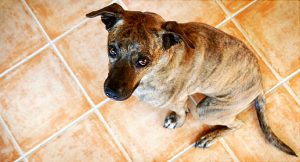 When your house-trained dog starts having accidents inside of the house, it can be very frustrating. You may be wondering why. Fortunately, this issue can be fairly easy to fix once you determine what is causing it.
When your house-trained dog starts having accidents inside of the house, it can be very frustrating. You may be wondering why. Fortunately, this issue can be fairly easy to fix once you determine what is causing it.
Your dog may suddenly start having accidents in the house if their normal outside environment is overstimulating or distracting. Dogs get distracted by new smells, pets, etc. which can cause them to forget that they need to go to the bathroom. To fix this, you should make a routine for your dog to go to the bathroom before they get to play. Avoid talking and interacting with your dog when he is sent outside. If you play with your dog, only do so after he has gone to the bathroom. Sticking to this schedule can eliminate the indoor accidents associated with overstimulation.
Other causes of indoor accidents can include fear and anxiety. If your dog is scared of something in the normal outdoor environment, your dog may not feel comfortable enough to go outdoors. To deal with fear related indoor accidents, you can take your dog outside when it is quiet (e.g. avoiding large trucks driving down the street). If you have recently rescued a fearful dog, it might be best to temporarily train them to use pads inside until they have adjusted to the new environment.
Similarly, changes in schedule can cause indoor accidents. These can include new pets and family members being around the house. Dogs are creatures of habits and changes in their lives can disrupt their schedule. Puppies tend to use the bathroom a few minutes after eating, drinking, playing, or napping while adult dogs tend to go early in the morning, mid-day, early evening, and right before bed. To deal with this issue, keep dogs on a very consistent schedule including feeding times and bathroom times. If you keep this schedule consistent, you will likely see an improvement right away.
A poor diet can also cause indoor accidents. Feeding cheap foods from your supermarket may yield more frequent and bulkier bowel movements. For this reason, a premium dog food is preferable since more nutrients are absorbed and hence less waste is produced. This means smaller stools and on a less-frequent basis. To reduce the amount of waste your dog produces and lessen the number of indoor accidents, feed your dog homemade food (recipes can be found online) or high-quality foods. As a rule of thumb, feed your dog natural or organic brands when possible.
When adopting puppies and if they are over eight and a half weeks old, they have a substrate preference. This means that they have a preference to the surface that they like to go to the bathroom on. If a puppy was trained to use pads instead of grass, it will be a difficult transition for them to start using grass immediately. The dogs may hold it until they find a surface that they like which could be your carpet.
Some possible medical causes to indoor accidents range from kidney issues to dietary problems. If your dog was reliably housetrained in the past and recently began having accidents, it is best to bring your dog to set up an appointment to accurately diagnose and treat your pet.
Simply enough, your dog might be old, or they might be inside for too long. You should not scold your well-trained dog for soiling in the house when they are inside for too long.
Lastly, dogs have a natural instinct to relieve themselves where they have done it before. Your dog can smell their own accident and acknowledge it as an acceptable bathroom area. Deep cleaning can relieve the issues associated with this.
If you ever have any questions, feel free to contact Dr. Olsen at Olsen Veterinary Clinic, available to be reached at 618-656-5868.
